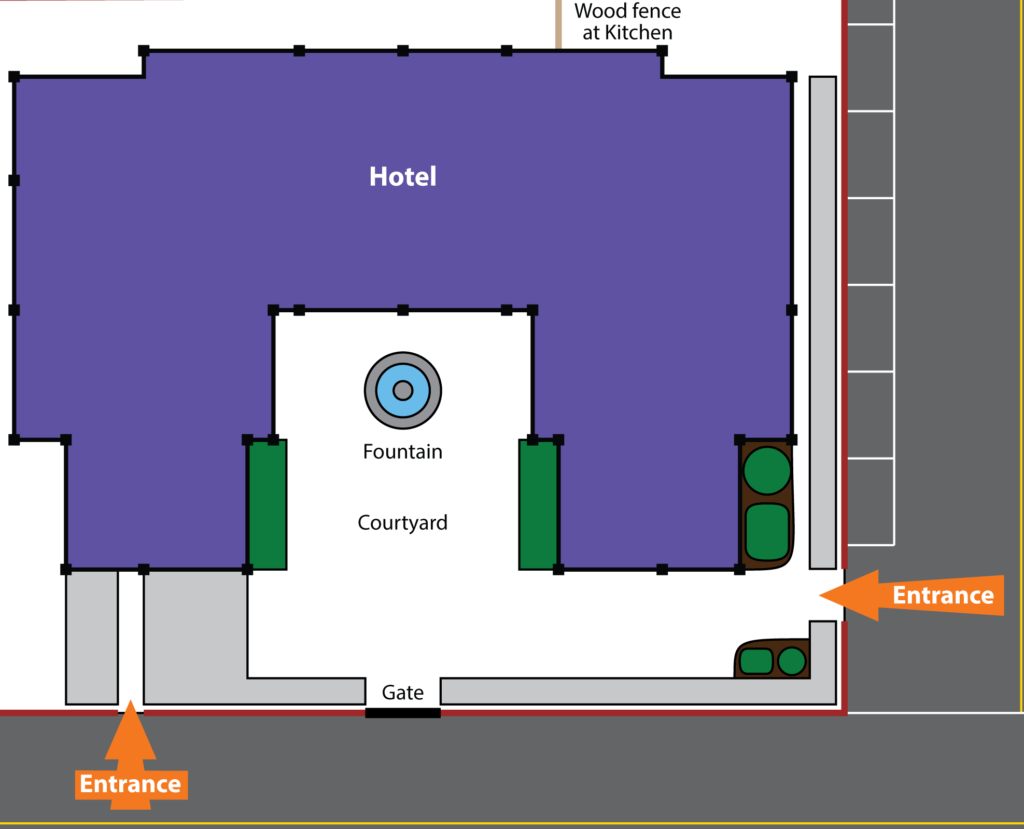Grades 6-12
Is this hotel ready for its grand reopening?
The Mystery
An architect worked on a review of a historic building that was originally constructed as a hotel around 1910 on Florida’s east coast. Over time the building had been turned into apartments and became dilapidated. The current owner had purchased the property many years ago and had renovated the building, working to bring it up to modern building codes.
The building is constructed with a reinforced concrete structural frame. The upper floors are identical with the various size guest rooms stacking one on top of each other. The individual hotel rooms include exhaust fans for the bathrooms and air conditioning units. When the restaurant was built out on the first floor, a large rooftop package air conditioning unit was installed for the restaurant and lobby areas. The supply and return air are ducted to the first floor restaurant space through insulated ductwork running down the rear exterior wall of the building.
Upon investigation, the archtect observed the column at D5 was badly damaged where the column connects to the second-floor slab. The concrete appears to be cracked, spalling like it is being crushed. The exposed steel reinforcing (rebar) is rusting. Since we are so close to the coast, exposed steel corrodes and rusts in the salty air, as can be seen on the steel doors to the stairs and utility rooms at the rear of the building. The cracked and rusting column is a safety concern. What could be causing the cracking of this one column?
Career Education and Description
Career Education required:
Often times, architects will pursue a five-year college degree in architecture and can continue on with a three-year Master’s degree, or post-college program. The education required depends on the type of architectural job desired.
Career description:
Being an architect lends itself to working in many different fields related to design, construction, development and facilities management to name a few. One can work in a traditional Architecture firm doing work like:
• designing buildings and creating construction documents (plans, sections, elevations and building details coordinated with engineering documents for site construction, air conditioning and heating, electrical and plumbing)
• doing Construction Administration which is working with the contractor and owner during the implementation of the construction documents
• working with construction firms in a Design/Build capacity or working directly with construction teams working with other companies in related fields such as the management and maintenance of buildings or for financial companies doing property condition assessments.
Property Condition Assessments are reports that are used in the sale or refinancing of commercial property to determine the anticipated costs to maintain a building over a term or period of time, typically 15 to twenty years. Property Condition Assessments require a knowledge of building systems and their components, the Expected Useful Life (EUL) of building systems and costs of replacement or repair of those systems. Building systems are made up of components, for instance window systems include the parts of a window – the glass, the materials for the window frame and the sealant and flashing around the window.
Solving the Mystery
What could be the cause of damage to the column? Choose from the ideas below. Use your worksheet for taking notes, writing down ideas and thoughts, and to analyze data.
PDF of Student Worksheet
Age of Column
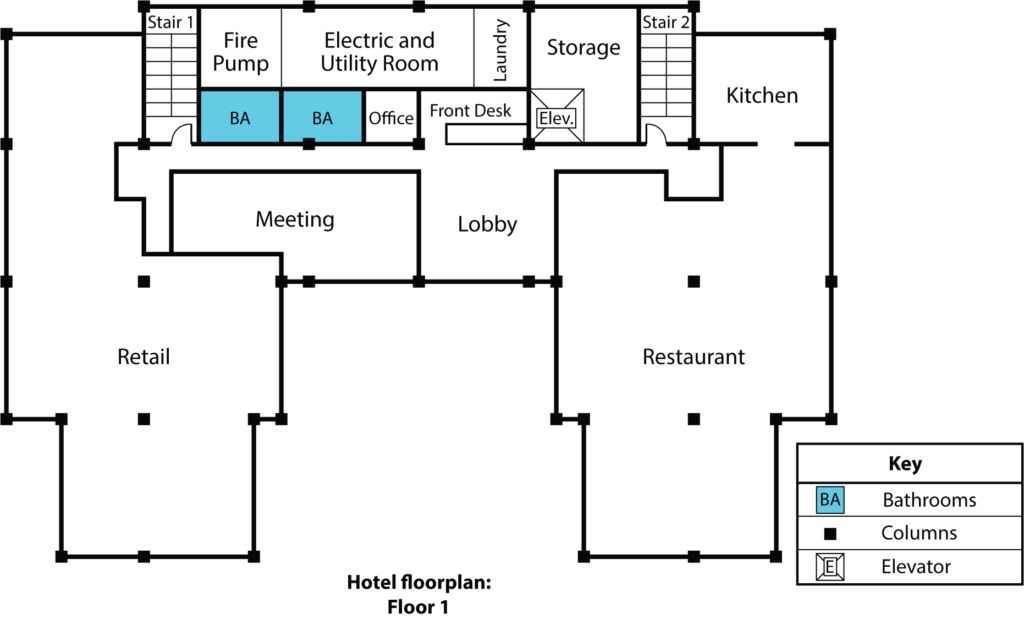

In the floor plan above, the black squares represent the columns in the building. Only the D5 column appears to be damaged. The architect determined this column was built at the same time as all the other columns in the building.
Construction of Highrise
To the rear of the hotel a new high rise building is nearing completion. The manager of the hotel reported that during construction of the high rise, there had been issues with noise irritating the hotel guests. During the demolition of the previous structures adjacent to the hotel and construction of the heavy foundations for the high rise the noise was worse, but as the building nears completion the noise issues have almost disappeared.
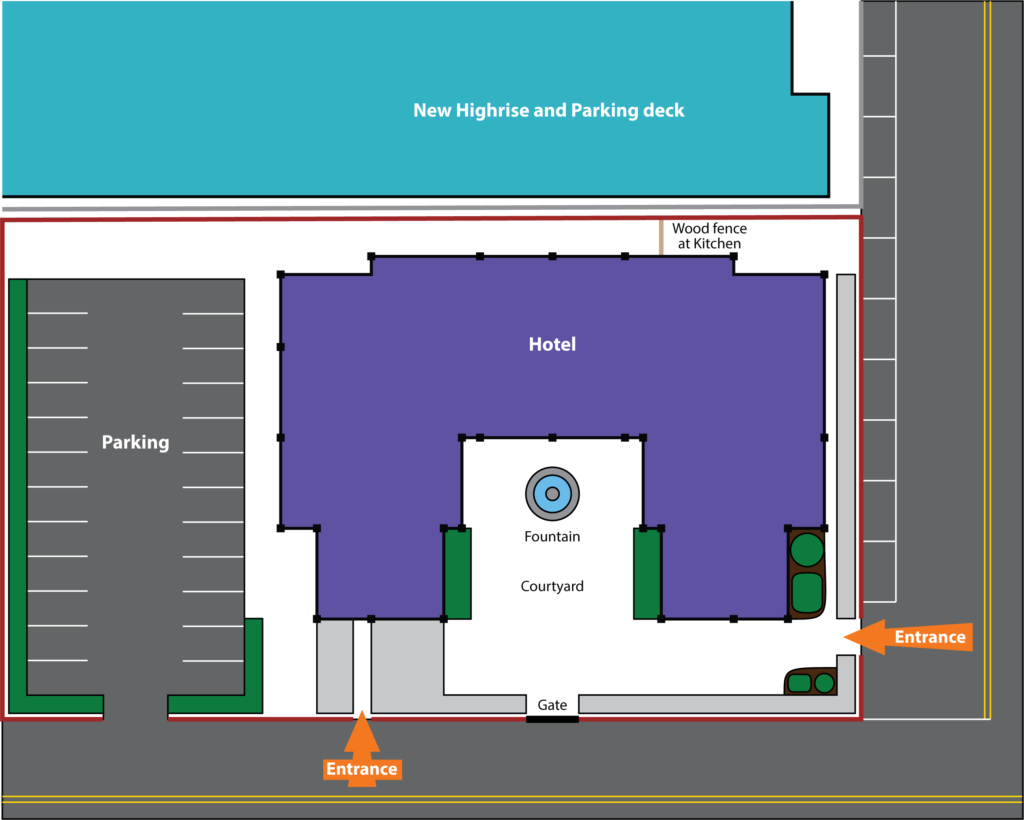
Earthquakes
The architect located the following chart regarding earthquakes in the area of the hotel:
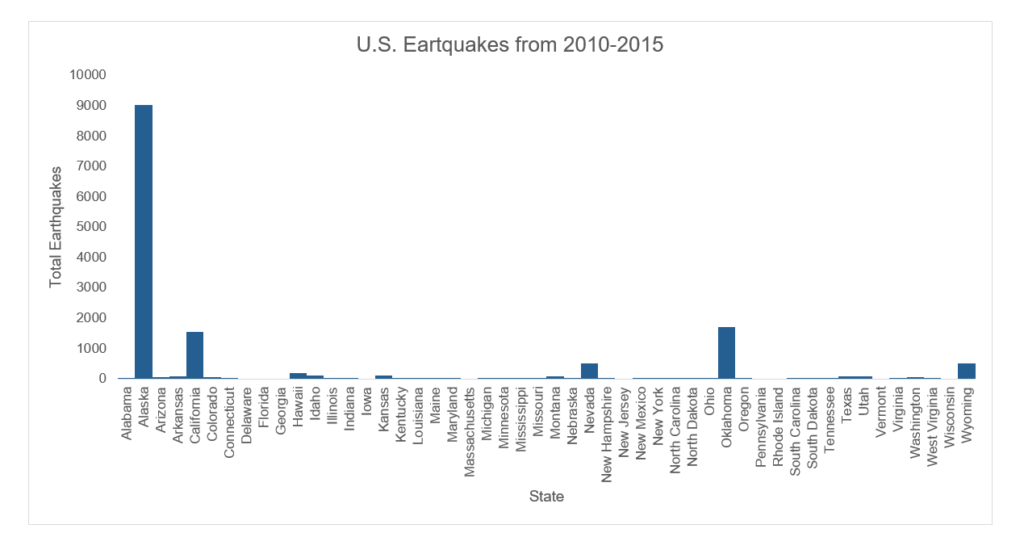
Heavy Load on Column
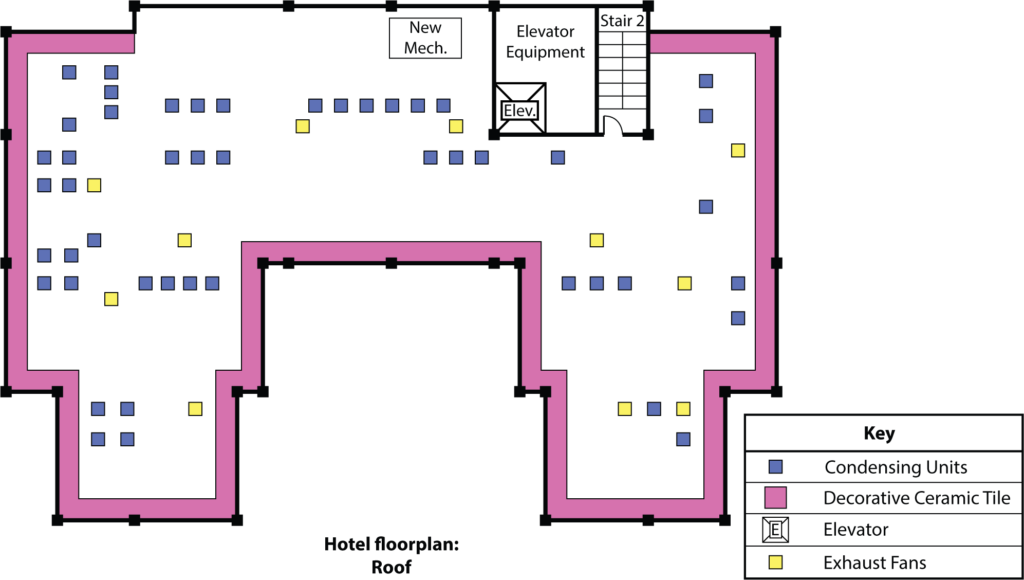
The diagram of the roof indicates were the condensing units, exhaust fans, and where the 1200 lb new mechanicals (HVAC unit) are for the restaurant on the first floor.
Hurricane Damage
The architect talked with the hotel manager, and she reported that around the time of ‘the hurricane,’ a pipe burst and caused extensive damage to the rooms at the rear of the hotel. The exterior of the building is in good repair. She thought ‘the hurricane’ happened in 2011 or 2012. The architect researched hurricanes from the time period and came up with the following information.
Chart of Hurricanes:
2010:
August 31 – September 4 – Hurricane Earl paralleled the East Coast of the United States, resulting in rip currents and wave heights up to 10 ft (3.0 m) along the eastern coastline of Florida.[99] Three people were killed in the state: a 61-year-old charter boat captain who suffered grave injuries after falling off his boat approaching Jupiter Inlet a 16-year-old who was rescued by a bystander but later died at the hospital, and a 57-year-old Swedish sailor whose boat was found but body was never recovered]
2011:
August 25–26 – Hurricane Irene passed east of the state as a major hurricane, generating waves of 7–10 ft (2.1–3.0 m) around Jacksonville Beach and Atlantic Beach] The high waves killed two people along the coast from drowning] Wind gusts reached 53 mph (85 km/h) in the state, strong enough to knock down trees and cause minor power outages.
2012:
October 25–27 – Hurricane Sandy produced 20 ft (6.1 m) high waves in Palm Beach County while the storm passed east of the state, causing flooding, beach erosion, and $14 million worth of damage. Winds from the storm reached 67 mph (108 km/h) in the state, strong enough to leave about 1,000 people without power.
2013:
June 6 – Tropical Storm Andrea made landfall in northwestern Florida near Steinhatchee and continued northeastward through the state. The storm produced a peak wind gust of 83 mph (134 km/h) at the Jacksonville Beach Pier, possibly related to a waterspout. Andrea produced 10 tornadoes in the state, as well as heavy rainfall reaching 14.27 inches (362 mm) in North Miami Beach, which caused flooding.
Water Damage from a Broken Pipe
The burst pipe in 2011 or 2012 damaged finishes and caused some mold issues, but no evidence of water damage was observed when the architect inspected the hotel. The guest rooms were a nice size, the wood flooring appeared in good condition and appeared to have been refinished recently. The hotel manager reported that all water damage was addressed and repaired several years ago.
Credits
- Idea and first draft: Christopher Lilley
- Writing: Tonya Schield
- Editing: Gail Wheatley
- Illustrations: Sandy Loi

